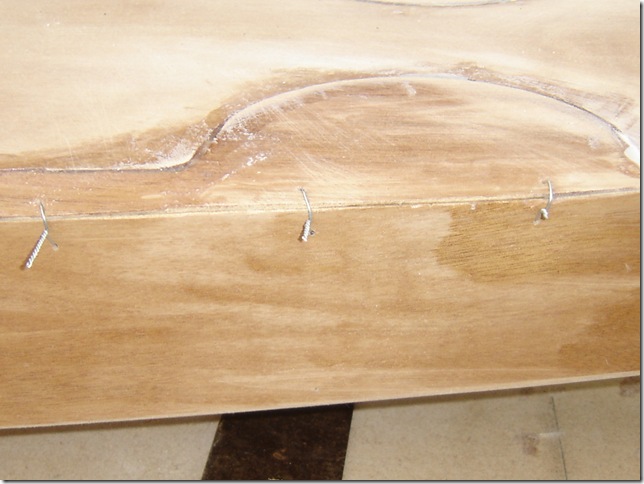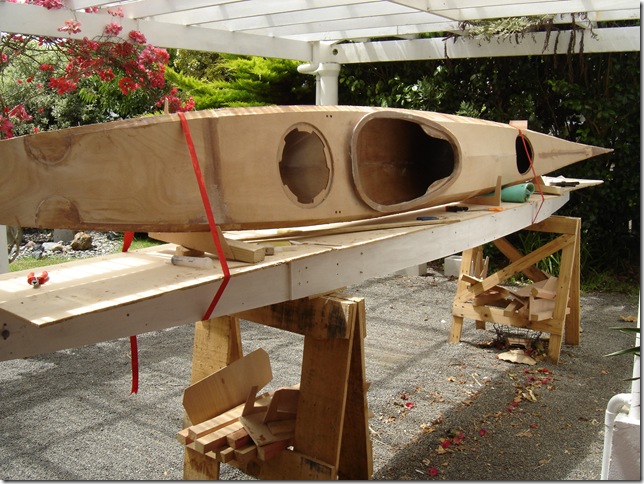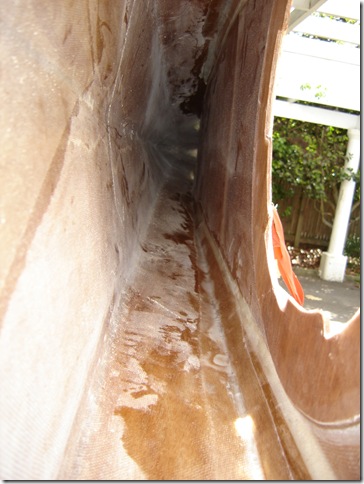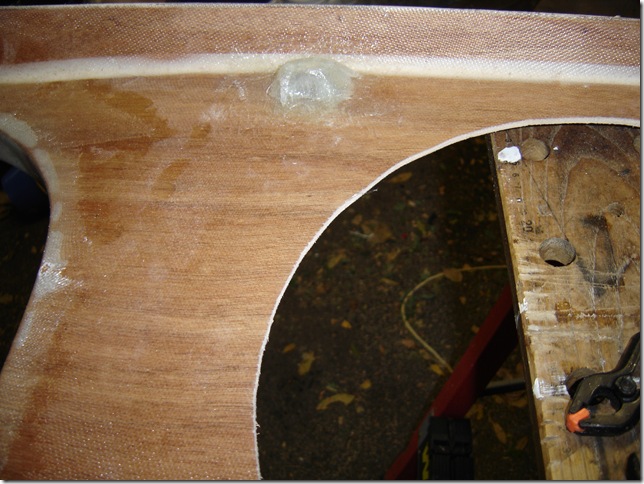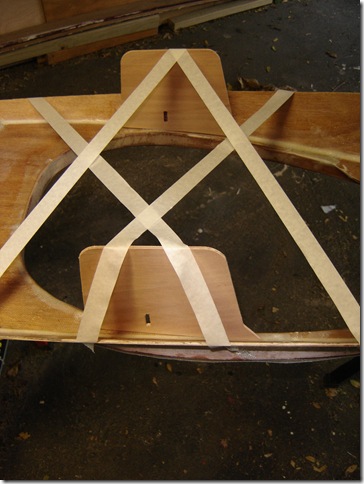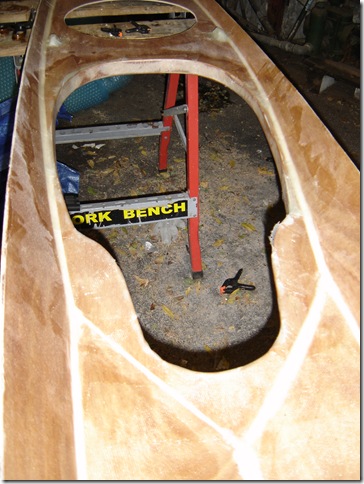Friday, February 27, 2009
Functionally complete kayak
Monday, February 02, 2009
S&G Night Heron – Attaching the Deck to the Hull
I found I couldn’t do this with just tape. The hull and deck needed more force to get the positioning of them together so I ended up wiring them together. This was the second time I did this. I did it first time round when wiring together the deck on top of the hull. I probably should’ve put more effort in then with the stern and it would’ve made life easier for me now.
The stern of the Night Heron has to be squashed together with some force. I’m not the only one that seems to have to do this. In the pictures supplied with Nick’s instructions you can see he has it happen to him and I’ve seen pictures from another builder with the same problem:
http://outdoors.webshots.com/photo/1165926632056308877loLvMK – this builder’s comments mirrored my experience exactly
The bow was easy. The last two feet of the stern were stubborn and took a bit of technique. There I used a paint spatula to force out the hull and then pressed hard and fast on the deck to squish the two beveled edges together for taping. One side of the stern just didnt want to play nice...
Maybe an extra form or two would be useful when creating the stern of the boat?
To help with getting the stern to fit I ended up putting in extra stitches along the rear of the boat. Getting them in at the back is easy as long you use long wires and get them through both holes while the deck and hull are still some distance apart. Then, only after all wires are in do you push the deck down onto the hull and tighten the wires.
I then glued up between the stitches – wish I’d done a cleaner job as I’m still sanding the rough bits up - and then waited a few days to be sure the two pieces wouldn’t crack or pop apart at any point.
With the stitches gone I then put the kayak up on it’s side and taped the inside seam. Notice I cut the hatches before attaching the deck. This made the taping quite easy.
I taped up to maybe 50cms from each end but in retrospect I could have gone further. The secret seemed to be lots of light!
Here’s one bit that went a bit wobbly:)
(Notice all the sanding dust still left inside!)
And then I just had to put it into the pool and proved it worked!
S&G Night Heron – Extra Cockpit Glass
Since I did such a terrible job of glassing the inside of the hull on my first attempt I decided to put a second, large piece of glass on the inside of the boat.
I guess I covered maybe 40% of the inside of the hull with a second layer of 200g glass (equivalent to 6oz), so it should be very strong!
Here’s the finished product. Much better! This time I took extra care to wipe off excess epoxy during the initial curing process and I used a tape edge to stop the frayed glass fibres sticking.
S&G Night Heron – Grab Loops
Rather than a big end pour I’ve gone with a couple of small plastic tubes (from old felt pens). I drilled the holes using the stitching holes in the hull as a guide for positioning them on each side of the hull.
To glue them into place I used the chopped up glass, epoxy mix. I wish I’d discovered this earlier. It looks very useful.
Notice the digital scales in the picture. I bought these from a supermarket for $16. They’ve been extremely useful in ensuring I get the epoxy mix right. I use small mixes of typically 36g, 48g, or 60g total weight (the mix ratio for Nuplex R180 is 1:5…).
S&G Night Heron – Deck Line Fittings
For these I used the Maroske style fitting. I used the instructions on Bjorn Thomasson’s site but in retrospect would do things a little differently.
The first couple that I did I left the pvc tubes in place for more than 24 hours and had a tough time pulling the tube out. In the end I found a hair dryer would blow in hot air and soften the tube sufficiently they came out. For the rest I found if I just pulled the tube out within 12 hours I was fine.
If I was doing it again I’d put a few larger pieces under the pvc loop then cover the pvc with epoxy mixed with lots of chopped up fibreglass then place a couple of larger pieces of glass over the top. I’m sure it would make a smaller, better fitting.
S&G Night Heron – Hip Plates
These were quite easy to position prior to gluing with a few lengths of masking tape.
I glued them into position with a microfibre additive then created a thick fillet and applied fibreglass up each side then a couple more shorter fibreglass pieces to strengthen the joint on the inside (where I’ll never be able to reach again once the deck is attached to the hull).
S&G Night Heron Build Notes – Fibreglassing The Coaming
Quick post. This wasn’t especially easy. Two layers of bias cut cloth. Putting them on wasn’t hard until it came time to push the cloth under the deck. You have to cut darts and fold the cloth under but it’s a tight corner and fibreglass doesn’t like tight corners. If I was doing this again I’d make a rounder corner to fold under. Unfortunately this is neigh on impossible with the thigh braces as you’ve only got the thickness of the ply to work with. Also, I flipped the deck upside down and the glass on the top of the coaming wanted to come off. Maybe I should have waited for the epoxy to gel before turning the deck upside down?
